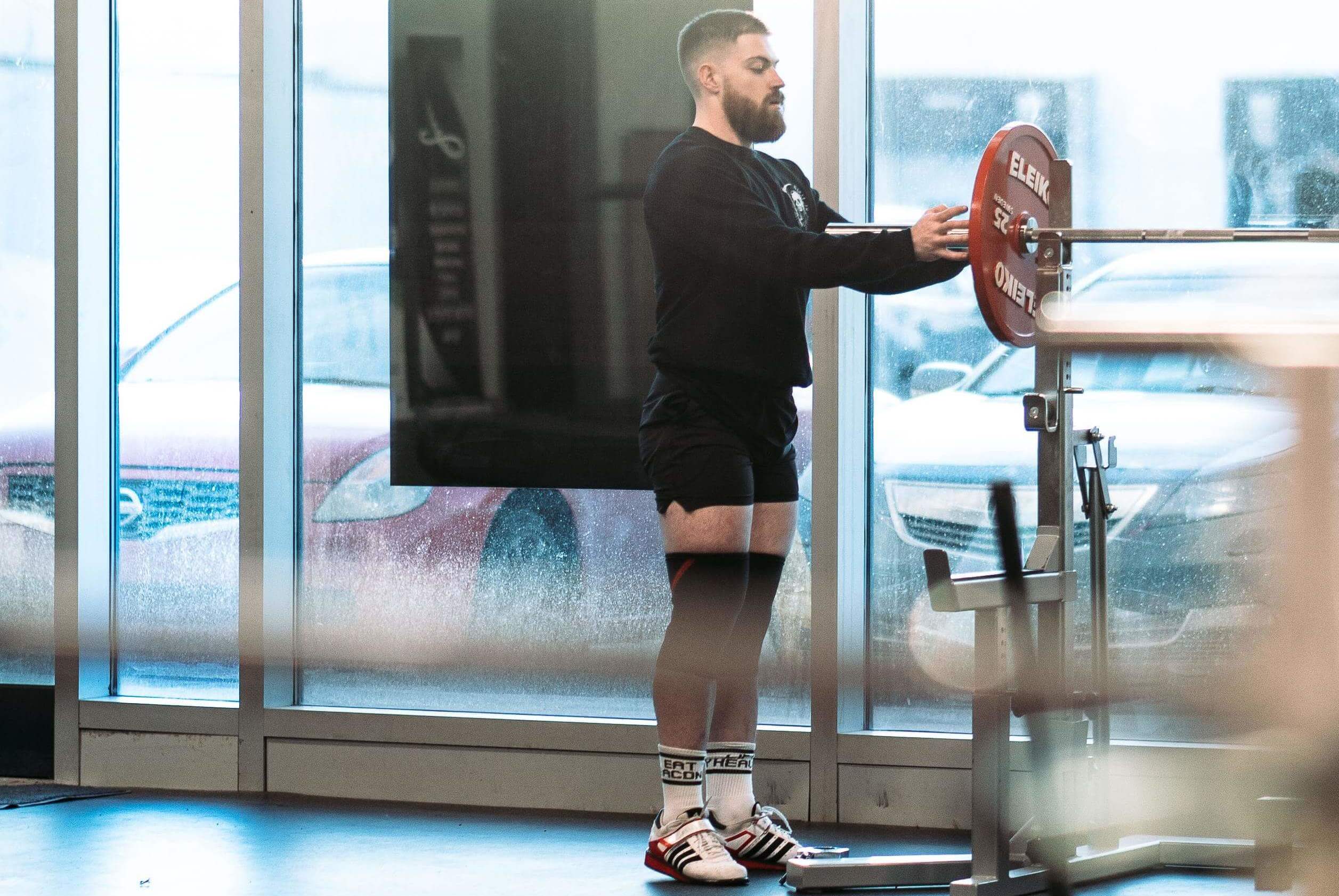Typically, most people train 5-6 days per week with one 1-2 hour session each day. An alternative is to break up the workouts and have one session in the morning and one session later in the evening.
The advantages to a training style like this are volume, having more energy for each training session, and saving time. There are drawbacks as well but as long as this split fits your routine the best, there are not any major reasons to train twice a day.
The key to building muscle is consistency and volume. If you are training enough and staying consistent, you will make gains. By working out twice a day, you are going to better be able to hit the needed volume for your muscles to grow. Because the volume of your training per day will be higher, you could decrease the amount of time per session or take more days off than you could have otherwise.
The optimal frequency to hit each muscle is twice per week (check out this post for more). As long as each muscle is being trained at least twice a week, the specific split you’re doing to achieve that frequency is not that significant. There are benefits to pairing muscles like chest and shoulders together since when the chest is worked so are the shoulders and vise versa making it optimal to hit both in one session. It is not necessary to do this, however, and it is up to you to find the split which is the most enjoyable, sustainable, and effective for your physique.
Benefits of Twice a Day
While it isn’t necessary, working out in both the mornings and at night has some advantages. The main benefits of training twice a day are time, energy levels, and volume.
Training twice a day can save you time by allowing you to do shorter sessions that are easier to work around other blocks of your day. If you work a 9-5 you could train for 45-60 minutes before work and get one session in 45-60 minutes right after work for the second session and be done. This could be more efficient than doing a full 1-3 hour training session either in the morning or evening.
This style of training may also improve your energy levels. When working out, by the end of a session your mental focus, physical energy, and overall concentration is likely to have waned. By working out in shorter chunks of time, you can maintain higher levels of energy in each workout since you can start fresh and won’t get burned out at the 1-1.5 hour mark.
When training twice a day, this also allows you to fit more volume into one day of the week. This means you could potentially condense a 6 day push-pull-leg split into a 3 day split by hitting two workouts a day. You could then take 4 days off a week, or dedicate one to cardio and 2 to the weekend.
Sample Training Split
This is a sample of a training split where each day is broken up into two workouts. This 2-a-day training split follows the push-pull-leg routine at a twice per week frequency for each muscle group. This is a very volume heavy training split so the sessions themselves would not have to be that long and the abs and cardio sessions on Sunday could be swapped for a day of recovery.
This split would be better if you were cutting, if on a bulk the cardio would not be as important to fit in twice a week. Also this training split does not give a lot of opportunity for days off so sleep and recovery would have to be on point.
| Mon | Tue | Wed | Thur | Fri | Sat | Sun | |
| AM | Chest Shoulders | Back | Glutes Hams | Chest Shoulders | Back | Glutes Hams | Abs |
| PM | Arms | Cardio | Quads Calves | Triceps Abs | Biceps Cardio | Quads Calves | Cardio |
Disadvantages of Twice a Day
The disadvantages of training twice a day are that you are more likely to have CNS fatigue, you have less time for the body to recover, you have to fit in two trips to the gym, and the workouts may not be as good because you already lifted earlier in the day.
CNS fatigue results from training at a high-intensity too often without enough time for your body to recover fully. It causes you to not be able to exert maximal force with your muscles and leads to a “burnt out” feeling.
It is possible to train twice a day without getting CNS fatigue but it is more likely since you will be lifting twice as often even if the sessions are just divided up larger sessions.
The body will also have less time to recover if you are training twice a day. After each session, protein synthesis will be elevated and the body will begin to transport protein to repair the damaged proteins. If you then train again later in the day, the body has already began the process of protein synthesis and muscle repair for the set of muscles you trained earlier which means it is going to have less energy for the second workout and may have less of an initial response to the protein breakdown from the second workout.
Also, if you workout at a gym and not your own house, hitting the gym both in the morning and the evening will require twice as many trips to the gym which may offset any time saved by working out twice instead of once. Your mental focus and concentration may also be lower for the second workout because you won’t approach it with the same morning intensity that you gave the first one.
Summary
Overall, there are less advantages to two training sessions per day than there are for one. The main advantages to training twice a day are fitting in more volume, having fresh energy for each muscle group, and saving time by working out around other parts of the schedule in your day.
The disadvantages to training twice are that you may get CNS fatigue, there is less time for your body to recover after each session, and the workout quality might suffer because you are more drained later in the day and have already worked out.
For more on training and building muscle, such as 5 compound movements for high testosterone and how to stay motivated to workout at home, click here.







